Intro
Discover the concept of the Reserve Army of Labor, a cornerstone of Marxist theory. Learn how it influences wages, unemployment, and the labor market. Understand the impact on workers, capitalism, and economic stability. Explore the role of surplus labor, labor supply, and the interconnectedness of labor markets in this in-depth analysis.
The concept of the reserve army of labor has been a cornerstone of Marxist theory, playing a crucial role in shaping our understanding of capitalism and its effects on the working class. In essence, the reserve army of labor refers to a pool of unemployed or underemployed workers who are available to be drawn into the workforce as needed by capitalists. This buffer of surplus labor serves as a means of controlling wages and maintaining the power dynamics between labor and capital.
What is the Reserve Army of Labor?
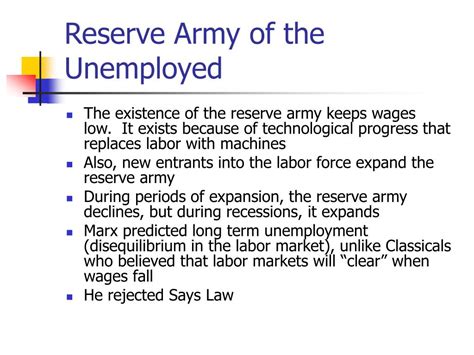
The reserve army of labor is a fundamental component of the capitalist system, comprising workers who are not currently employed or are underemployed. This surplus labor pool serves as a reserve force that can be drawn upon by capitalists to meet fluctuations in demand or to replace existing workers who are deemed too expensive or too militant. The existence of this reserve army puts downward pressure on wages, as workers who are fortunate enough to have jobs are reluctant to demand higher wages or better working conditions for fear of being replaced by those in the reserve army.
Historical Context
The concept of the reserve army of labor was first introduced by Karl Marx in his seminal work, "Das Kapital." Marx argued that the reserve army was a natural consequence of the capitalist system, which perpetually creates a surplus of labor as a means of maintaining its power and profitability. Throughout history, the reserve army has taken various forms, from the peasants forced off their land during the enclosure movement in medieval Europe to the modern-day gig economy and temporary workers.
Functions of the Reserve Army of Labor
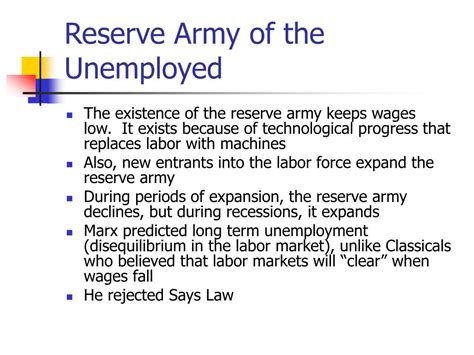
The reserve army of labor serves several functions within the capitalist system:
- Wage Control: The presence of a reserve army puts downward pressure on wages, as workers are reluctant to demand higher wages for fear of being replaced.
- Labor Discipline: The threat of replacement by members of the reserve army serves as a means of disciplining existing workers, making them more willing to accept poor working conditions and low wages.
- Flexibility: The reserve army provides capitalists with a flexible workforce that can be drawn upon as needed to meet fluctuations in demand.
- Technological Advancements: The reserve army can be used to implement new technologies, as capitalists can draw upon workers who are willing to work for lower wages and accept new working conditions.
Modern-Day Manifestations
The reserve army of labor continues to play a significant role in modern capitalism, taking various forms such as:
- Gig Economy: The rise of the gig economy has created a new type of reserve army, comprising workers who are forced to work on a freelance or temporary basis.
- Temporary Workers: Temporary workers are another manifestation of the reserve army, often working on short-term contracts and without benefits or job security.
- Underemployed Workers: Underemployed workers, who are working part-time or in jobs that do not match their skills and experience, are also part of the reserve army.
Impact on Workers

The reserve army of labor has a profoundly negative impact on workers, leading to:
- Low Wages: The presence of a reserve army puts downward pressure on wages, making it difficult for workers to earn a living wage.
- Poor Working Conditions: The threat of replacement by members of the reserve army makes workers more willing to accept poor working conditions.
- Insecurity: The reserve army creates a sense of insecurity among workers, who are constantly worried about losing their jobs.
Conclusion
The reserve army of labor is a fundamental component of the capitalist system, serving as a means of controlling wages and maintaining the power dynamics between labor and capital. Understanding the reserve army is crucial for developing effective strategies to combat its negative impacts on workers and promoting a more equitable society.
Gallery of Reserve Army of Labor
Reserve Army of Labor Image Gallery
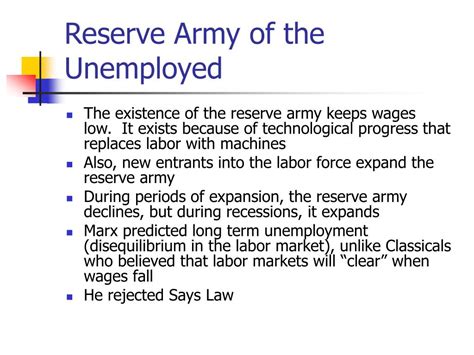
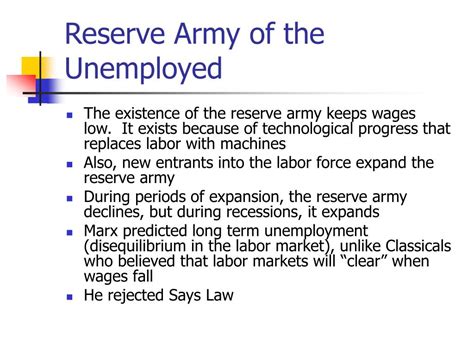



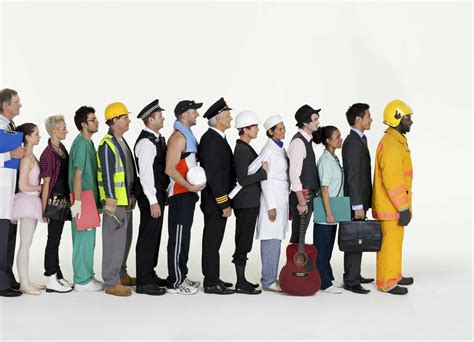
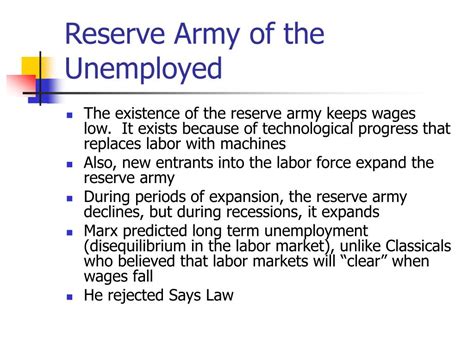
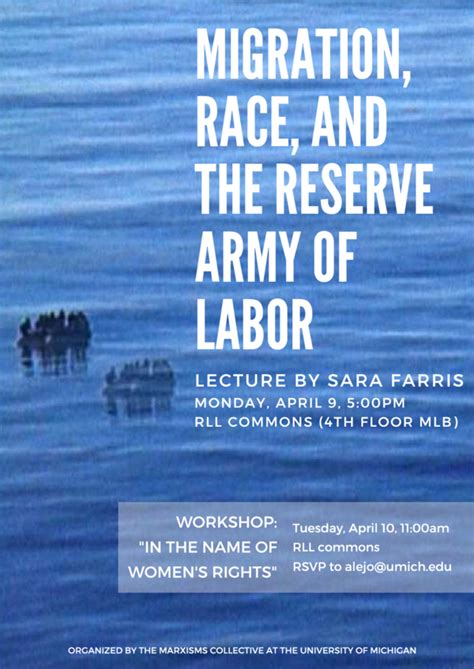
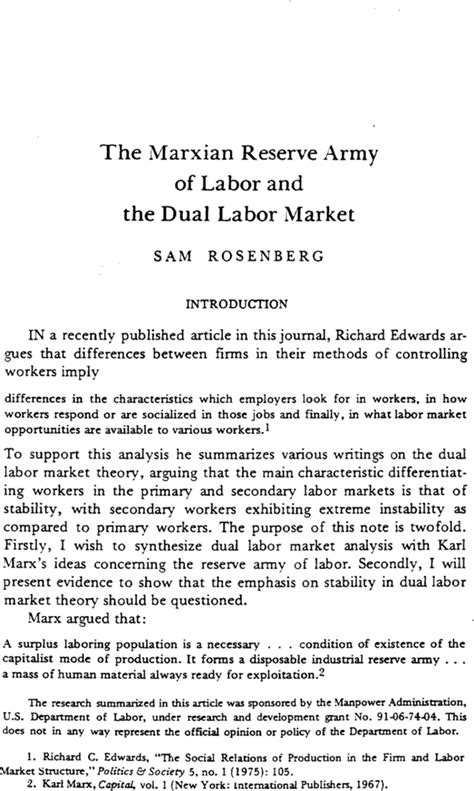
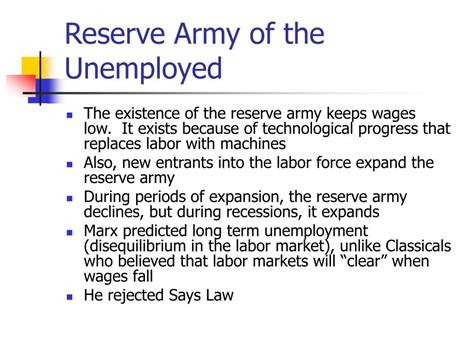
Frequently Asked Questions
What is the reserve army of labor?
+The reserve army of labor is a pool of unemployed or underemployed workers who are available to be drawn into the workforce as needed by capitalists.
What are the functions of the reserve army of labor?
+The reserve army of labor serves several functions, including wage control, labor discipline, flexibility, and technological advancements.
How does the reserve army of labor impact workers?
+The reserve army of labor has a profoundly negative impact on workers, leading to low wages, poor working conditions, and insecurity.
